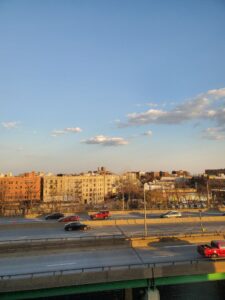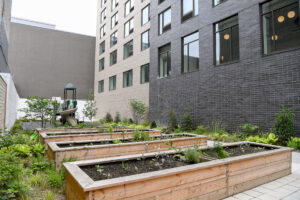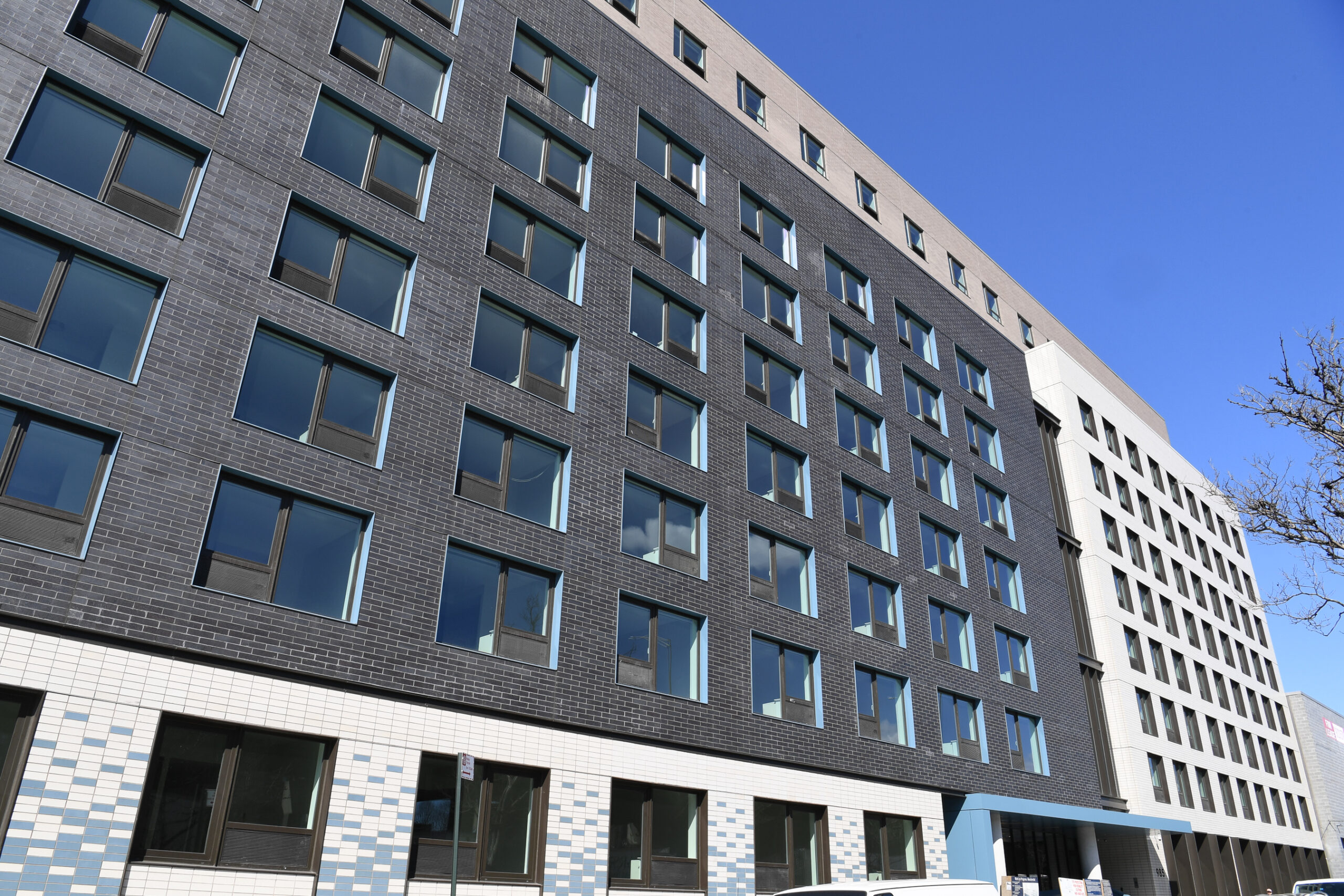Bianca Ortiz’s favorite thing about her Bruckner Boulevard apartment is the light that pours in through the large windows. It’s important for her home to be bright and she loves being able to see the sunny sky on a clear day.
“I love the space. It’s just wonderful,” Ortiz says.
Before she became a resident of Bruckner Boulevard, Ortiz was without housing. A Queens native, Ortiz felt she lacked support from loved ones with managing her mental health diagnosis. Her circumstances led to living in a shelter for nearly a year and eventually brought her to Community Access.
“This housing basically saved me,” says Ortiz. “Community Access has been really integral in my life in recent years.”

Founded in 1974, Community Access is a non-profit organization with a mission to help people with mental health concerns recover from trauma and discrimination. The group approaches this goal with a range of services, but housing is at their core.
“We’re built upon the simple truth that people are the experts in their own lives,” says Community Access CEO Cal Hedigan. “That’s really the foundation of how we provide services.”
Allowing participants to take back control of their own lives begins with producing safe spaces for them to live. Community Access operates several supportive housing sites all around the city. The Bruckner Boulevard site in Longwood, which opened last year, is their newest. Funding for the Bruckner Boulevard building came mostly from the Empire State Supportive Housing Initiative which is New York State’s commitment to supplying 20,000 new supportive housing units in the next 15 years.
Now the largest Community Access development, Bruckner Boulevard has 215 apartments — a mix of studios, one and two bedrooms. Like any new development in the city, Community Access had to go through the local community board with its project idea, which was met with concerns from worried locals.
“Sadly there remains a lot of stigma and misconceptions about people with mental health concerns,” says Hedigan. “People are wary.”
On some level, Hedigan understands the worry. Neighborhoods like Hunts Point are already overloaded with homeless shelters or other similar programs. Hedigan makes it a point to invite anyone who may be unsure about what Community Access is to come see the building and learn more about it.
“There’s a real education process that needs to happen,” says Hedigan. “I invite people to understand our case, who we are and what we do and really understand the housing that we build.”
The idea of integration is central to the model Community Access uses for its supportive housing. Half of the apartments at Bruckner, for example, are reserved for people living with mental health concerns, while the other half are for people or families with low incomes or who experience chronic homelessness.
“I’m always concerned about the ratio of people who have mental health concerns versus people who don’t in a building,” says Hedigan. “It’s important that we’re developing and operating apartment buildings that look and feel like other apartment buildings and don’t tip over into feeling like an institution of some kind.”
Sam Stein is the author of the book Capital City, which details how the real estate industry has largely taken over urban planning. Stein is also a housing analyst at the Community Service Society of New York. Though Community Access’ buildings are not an anomaly in the city, Stein points out that there needs to be more housing models like them in New York.
“There’s generally a recognized need for much more of this model of housing,” says Stein. “And there’s also a pretty general acceptance that it works.”
In many ways, Bruckner Boulevard is just like any other building in the city. All of the tenants have their own leases and pay rent. There’s a superintendent and neighbors close by. But in other ways, Community Access offers much more than a typical apartment building.
Residents enjoy a communal garden and kitchen, exercise rooms and common spaces, and all are paired with a service coordinator. These are staff members who work in the building to assist participants with achieving any goals they have.

“That’s always been a big help, to have someone to turn to when necessary,” says Ortiz. “The staff has been wonderful to work with. Everyone has their dreams, their hopes, their aspirations that they’re working towards in their own way.”
Since moving to Bruckner, Ortiz has already been able to work on one of her goals of becoming a peer counselor, where she assists other people in similar situations as her. Though she says it’s a “very part-time” job, she enjoys what she does and is looking forward to doing more of it.
The Bruckner Boulevard building is approaching its one year anniversary this May. It hasn’t been an easy road. Community Access thrives on building personal relationships in order to reduce stigma, something that has been much more difficult during the pandemic.
“It’s important to be clear with people that there are tenants who are struggling with mental health concerns, there are people who may be struggling with substance use, there are people who may have not had experience living in an apartment on their own,” says Hedigan.
“We try to have that conversation while not reinforcing stigma and prejudice,” she adds. “People may have a true lack of knowledge because there is so much of that. So we try very hard to create opportunities for community building so people can get to know each other as human beings.”
Though such in-person opportunities may be on hold, Hedigan says staff has been trying to provide them virtually.
Ortiz looks forward to a return to normalcy. There are many amenities in her new home that have been limited due to COVID-19 and so many neighbors she has yet to meet and connect with. In the meantime, she shares masked interactions with them.
“There’s just this nice vibe in the building. When you get in the elevator, saying ‘hello’ or ‘good morning’ to people with their pets, everyone is very friendly” says Ortiz. “We’re just people, just hoping to make our way in life as peacefully and positively as possible.”

